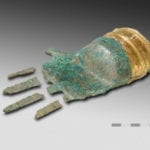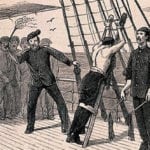 Technology
Technology  Technology
Technology  Humans
Humans 10 Everyday Human Behaviors That Are Actually Survival Instincts
 Animals
Animals 10 Animals That Humiliated and Harmed Historical Leaders
 History
History 10 Most Influential Protests in Modern History
 Creepy
Creepy 10 More Representations of Death from Myth, Legend, and Folktale
 Technology
Technology 10 Scientific Breakthroughs of 2025 That’ll Change Everything
 Our World
Our World 10 Ways Icelandic Culture Makes Other Countries Look Boring
 Misconceptions
Misconceptions 10 Common Misconceptions About the Victorian Era
 Mysteries
Mysteries 10 Strange Unexplained Mysteries of 2025
 Miscellaneous
Miscellaneous 10 of History’s Most Bell-Ringing Finishing Moves
 Technology
Technology Top 10 Everyday Tech Buzzwords That Hide a Darker Past
 Humans
Humans 10 Everyday Human Behaviors That Are Actually Survival Instincts
 Animals
Animals 10 Animals That Humiliated and Harmed Historical Leaders
Who's Behind Listverse?

Jamie Frater
Head Editor
Jamie founded Listverse due to an insatiable desire to share fascinating, obscure, and bizarre facts. He has been a guest speaker on numerous national radio and television stations and is a five time published author.
More About Us History
History 10 Most Influential Protests in Modern History
 Creepy
Creepy 10 More Representations of Death from Myth, Legend, and Folktale
 Technology
Technology 10 Scientific Breakthroughs of 2025 That’ll Change Everything
 Our World
Our World 10 Ways Icelandic Culture Makes Other Countries Look Boring
 Misconceptions
Misconceptions 10 Common Misconceptions About the Victorian Era
 Mysteries
Mysteries 10 Strange Unexplained Mysteries of 2025
 Miscellaneous
Miscellaneous 10 of History’s Most Bell-Ringing Finishing Moves
10 Sordid Insights Into The Victorian Opium Age
Opium dens, the oblivion of laudanum, the relief of morphine, and the illicit activities of a drug culture so captivated that they didn’t even know how much danger they were in—the Victorian era is forever linked with the idea of opium. It was important enough for nations to go to war over it, and it started the idea of drug laws, something that we still fall back on today in hopes of keeping the same thing from happening again.
10 The London Myth

When it comes to opium dens in the Victorian era, surely there was nowhere that had more of these seedy places than London. We read about them in the works of Dickens and in Sherlock Holmes, and it’s one of the quintessential images of the darker side of Victorian life. Only, it’s not exactly true.
While there were opium dens in London, there were nowhere near as many as we tend to think. They were confined to the dock areas, where they were run by Chinese immigrants and their often English wives. Even at the height of opium use in London, the Chinese community only numbered a few hundred people, but it was their presence, and their association with opium, that made the idea of the opium den grow to larger-than-life proportions.
When opium dens first opened in London, they were mainly meant to serve sailors. Aside from opium, the sailors were looking for one other thing—women. As such, the dens developed into even more scandalous locales, where local women either became prostitutes or married into the Chinese community. And that, in turn, made the community a threat to the established way of British life despite its small size. By the 1920s, there were rumors of a global Chinese empire fueled by opium. Race riots and hatred were encouraged by less than reputable newspapers.
We’ve heard the opium dens of London described in scores of different books, but every description that we have of what went on in these dens of sin comes only two real-life opium dens. They were located in New Court Shadwell, and visiting them became the thing to do. Gradually, smoking opium was handed off from sailors and the lower class to the upper class, which was looking to add some spice to their life. The allure of crossing cultural and class boundaries elevated the idea into the exotic, often-talked-about opium den, immortalized in literature and pop culture as something much larger than it actually was.
9 Pennsylvania Avenue’s Opium Den

Not surprisingly, there were opium dens in port cities all over the world, even one on Pennsylvania Avenue in Washington, DC. It was located at 325 Pennsylvania Avenue Northwest, to be exact, about where Constitution Avenue intersects with Pennsylvania. On July 22, 1907, The Washington Post ran an article about a police raid of Moy’s Store, a front for a so-called “hop room.” The article, which is laden with every sort of racial slur and offensive stereotype you can possibly imagine, tells a pretty sordid story.
According to Lee On, who ran the hop room, a man named Harry Puryear burst into the room armed with a revolver and demanded opium. When On ran, the police showed up to find the armed man, tables of drug paraphernalia, and a major problem—Puryear was the nephew of a former police chief. According to Puryear, he was only there to try to borrow some money, and when he saw all the opium pipes, he was so clueless as to what they were that he had to ask.
Opium dens had been around in Washington, DC, for some time. Another Washington Post article talks about a September 1894 raid on one at 425 10th Street Northwest, where police were greeted by the sight of nine opium smokers “almost completely under the influence of the subtle drug.” Edward Williams, who gave his occupation as “gambling,” faced charges for keeping the place. The club was officially called the Excelsior Pleasure Club, a legitimate club that was incorporated as a front for the well-dressed patrons who visited regularly. Police had been looking for two “notorious opium fiends” named Matinee Charley and Gypsy Joe, but all they found were several government employees.
8 The Terminology We Still Use

Many of our words have their roots in Victorian England, and if you talk about your friend’s “bachelor pad,” you might not realize what you would have once been implying. “Pad” is arguably a weird term for a residence. According to Jesse Sheidlower (who is a lexicographer, former president of the American Dialect Society, Random House editor, and one of New York Magazine‘s 100 smartest people in New York), the terminology goes back to opium use.
“Pad” originally popped up in the 17th century, when it was used to refer to a rag or straw bed. Such things were usually used by transients or criminals, and while we’re not sure where that started, we do know that by the time that the early 20th century rolled around, “pad” had morphed into meaning something else. Now, a pad was a different kind of bed, and it was in the rooms used by opium smokers. Users would crash on their pad while the drugs worked their magic, and it wasn’t long before it was associated with all sorts of criminal activity. A pad became a place not necessarily for opium, but for any kind of shady dealing.
By the 1960s, the hippie movement had commandeered the use of the word, and it started to become more associated with the idea of an apartment. It’s still kept a bit of its original meaning, as “pad” generally doesn’t refer to any dwelling larger than an apartment. That’s because most of the criminal activity with which “pad” was originally associated was small-scale.
7 The Opium Vampires

While opium was first associated with docks and sailors who’d become addicted to the drug while overseas, by the end of the Victorian era, opium was firmly entrenched as the drug of the exotic and the decadent. Not everyone was so enthralled with the idea of opium, and in the 1920s, female addicts of a certain standing became known as “opium vampires.”
Opium vampires were largely upper-class women who had little else to do with their time and the money to afford whatever pastime they set their minds to. In 1926, Sara Graham-Mulhall wrote an expose on the opium culture called Opium: The Demon Flower. She wrote of women who were so addicted to the drug that nothing, not even pregnancy, could stop them from taking it. By that time, it was too late, and they were so filled with the drug even on a cellular level that they had no hope of bearing a healthy child.
The opium vampires were a Victorian-era version of heroin mothers and crack moms, and they were seen as something of a polar opposite to the good, respectable sort of woman that was the ideal. They were also seen as more than just self-destructing; they were vampires in almost every sense of the word. They were seen as preying on men, relying on their allure and their exotic charm to entice. They were seen as being incapable of caring for themselves or their children, and Graham-Mulhall called for the unconditional removal of any child born to one of these fashionable, well-off, and cursed addicts.
Graham-Mulhall also went on to warn about how these opium vampires spread their habit like a disease. They went away on exotic vacations and returned to colleges with a new habit. They targeted younger men, and they were called “actresses in the great drama of opium.” They dazzled with their high-society ways and lured the unsuspecting into addiction and ultimately downfall.
6 Godfrey’s Cordial
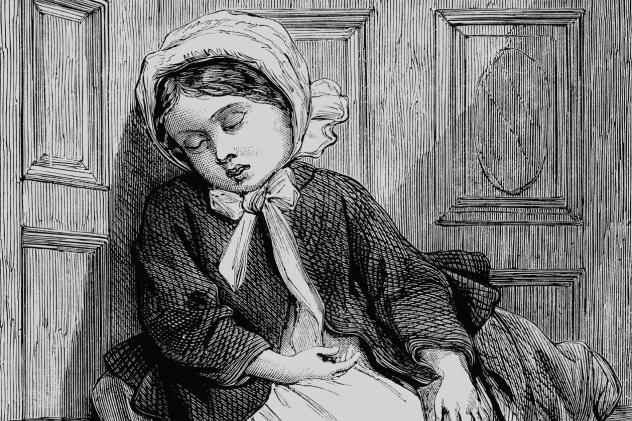
It’s well known that opiates were a frequent ingredient in medications of all sorts, but there’s one in particular that stands out from the crowd. Godfrey’s Cordial was also known as “comfort,” and was mind-blowingly common. One version, made by the Loewy Drug Company in Baltimore, Maryland, lists its ingredients as 1.6 grams of opium per fluid ounce, 5 percent alcohol, potassium carbonate, and sassafras oil. At the time, a single adult (or young teenager) would often be responsible for caring for a whole flock of children when parents and other family members went to work. It could be a little overwhelming when the kiddos were, you know, conscious. Godfrey’s Cordial was nothing less than a godsend.
One anonymous statement to the benefits of the deadly mixture was this glowing review: “The young’uns all lay about on the floor like dead’uns, and there’s no bother with ’em. When they cry, we gives ’em a little of it—p’raps half a spoonful, and that quiets ’em.” Another testimony came from a 14-year-old girl who was often tasked with watching a whole pack of kids. She was grateful “that they leave me plenty of stuff, ’cause then, when they begins to cry or get troublesome, I shoves some of it in their mouths, and that stops ’em”.
As barbaric and dangerous as it was effective, this practice was so normal that it’s amazing anyone survived past infancy. In 1862, a survey in Coventry found that 12,000 doses were given to kids every week, and chemists in the 1840s would often measure their sales not in ounces or bottles, but in gallons. In 1871, a Lincolnshire chemist (one of several in the area) who served around 6,000 people reported that he sold about 25.5 gallons every year, while one of his competitors dispensed about six pints a week.
It wasn’t just child care workers who resorted to Godfrey’s to keep their charges quiet, either. Women who worked from the home in domestic industries like lace-making often doped their children up so they could work uninterrupted, like the sad case of Nottingham lace maker Mary Colton. She relied so heavily on Godfrey’s Cordial that her baby grew thin and sickly enough for neighbors and friends to feel it necessary to intervene and suggest that she start the baby on a regimen of another substance that was bound to bring back the child’s color and appetite.
What was the substance that they all prescribed? Laudanum.
5 The Roosevelts And Opium

The US has its share of old money and pseudo-royalty, and not all of them made it in ways that their descendants are proud of.
Warren Delano, grandfather of Franklin Delano Roosevelt, was part of a massively successful seafaring family. When he came of age and entered the family business, he journeyed from South America through the Pacific Islands and finally into China, where his experience as a merchant and trader allowed him to become the head of Russell and Company. At the time, the company was one of the major players in the tea business, overseeing the export of Chinese tea to the rest of the world. While tea was certainly in demand and certainly profitable, Delano found something even more profitable during his nine years there—opium.
At the time, it was technically illegal to trade in opium, but illegality only occasionally stopped people when there was a literal boatload of money to be made. In letters home, Delano wrote of the effects that he knew opium had on those who became addicted and talked about the corpse-like addicts he’d met. He then went on to justify it and liken it to the trade of wine and spirits that the US was already engaged in.
Operations proved more than a bit tricky, however, and in 1836, the Russell and Company facility was stormed by 8,000 men, up in arms over the trafficking of a substance that had created millions of addicts. Delano got out of the business and headed back to the US, where he attracted a wife with his newfound wealth. They moved to China for three years but eventually settled in New York.
A financial panic in 1857 caused Delano’s wealth to evaporate even more quickly than it had come, causing him to return to China for five more years. Since opium was still popular, he went back to the business. He eventually scored a huge client—the Medical Bureau of the US War Department. The Civil War was in full swing by then, and Delano contracted with the US government to be their opium supplier. He spent the duration of the war in China and shipped medical opium back to the States. He was joined by his family, including his daughter Sara, who would become the mother of a president.
4 The First Morphine Murder

In 1823, France was host to the first trial of a man accused of using the opium-based drug morphine as a tool for murder. The accused was 27-year-old doctor Edme Castaing, and his story was a bizarre one of desperate measures taken to secure a lavish lifestyle.
He was already living beyond his means by the time that he began caring for the unlikely named Hippolyte Ballet. Hippolyte was dying a rather slow death from tuberculosis, which gave him enough time to rewrite his will to exclude his brother, Auguste, and keep him from inheriting any of the fortune that was going to be up for grabs upon his death. Castaing and Auguste not only destroyed the new will, but hurried Hippolyte’s death along with a fatal dose of morphine.
Castaing, now in good with his new friend Auguste, convinced him to rewrite his own will to include his close friend, the doctor. Once the will was safely in the hands of legal counsel, Castaing took Auguste for a ride to a farm in the country. While they were there, Castaing slipped a lethal dose of morphine into Auguste’s wine. Suspicions mounted, and the doctor went on trial.
The idea of morphine as a deadly substance was so new that it was tough to prove. There were a couple telling pieces of evidence against Castaing, though, including his recent purchases of a relatively large quantity of morphine, his known experimentation with different poisons, and a series of inquires he’d made trying to find out what poisons were likely to go undetected during an autopsy.
Of course, there was also the massive amount of money that he suddenly came into after the deaths of the two brothers. Castaing was found guilty. He continued to insist that he was innocent, all the way to the guillotine.
3 Alchemy And Opium
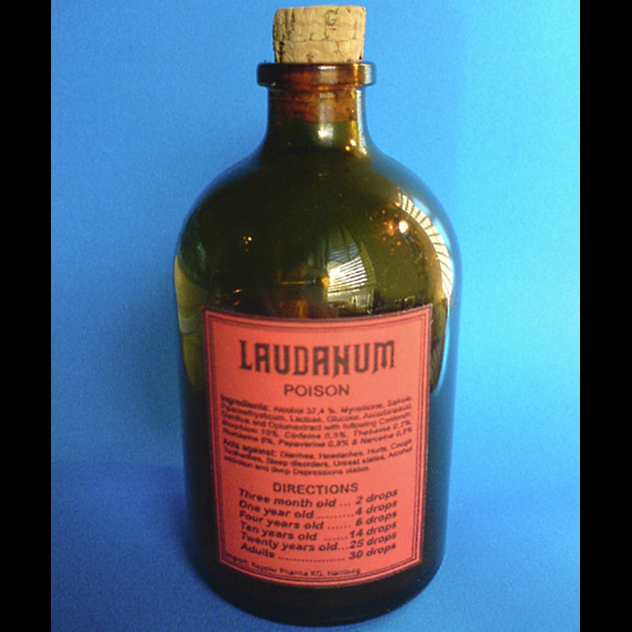
Alchemy has given birth to a wide range of modern ideas, and even though laudanum is most often associated with the Victorian era, it had a long, strange history before that.
Credit for its discovery is usually given to Paracelsus, who started the process by mixing opium with alcohol and finding out that it was much more soluble in this form than it was when it was added to water. The simplified version of the history is that he added opium to wine, threw in some spices to make it more palatable, and went on to claim that it was a miracle concoction which even allowed him to raise the dead. (The one thing that it couldn’t do, however was cure leprosy.) Although the basics of the drug were the same as the one that would change the face of the Victorian era, Paracelsus’s laudanum had a few extra ingredients: He included powders of pearls and gold and gave it its notorious name, based on the Latin word laudare, meaning “to praise.”
By the 17th century, there was a new version of laudanum on the market. English doctor Thomas Sydenham claimed to have reinvented laudanum and made a new tincture based on the work of Paracelsus. His version was made from opium, cinnamon, cloves, saffron, and high-quality sherry. He claimed that his version could cure just as many diseases, ills, and illnesses as Paracelsus’s tincture, and a key part of its popularity seems to have been saffron. Sydenham’s version became the drug whose popularity lasted for centuries, hailed as a miracle cure and initially a legitimate medicine. It was only later that it became known for its widespread recreational abuse. In areas where saffron wasn’t widely available, it was left out of the recipe, and laudanum failed to take hold in those areas like it did in other parts of Europe.
2 Branwell Bronte
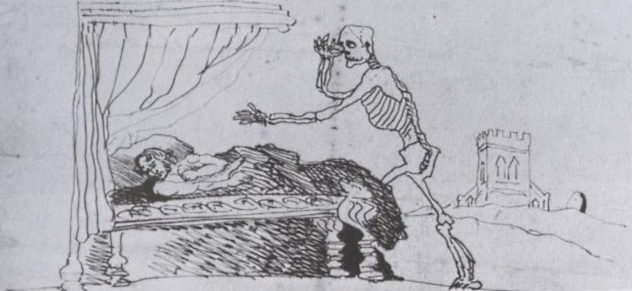
The Bronte sisters are well-known for their depictions of contemporary life and love, and part of that society was the impact of opium. In The Tenant of Wildfell Hall, Anne Bronte wrote of the fictional Lord Lowborough. He was a down-on-his-luck member of her main character’s inner circle, beleaguered by his wife and plagued with an addiction that countless people of the era would find familiar.
His melancholy misery had a very real-life inspiration—Anne’s brother, Branwell. Addicted to both laudanum and gin, he was her source for getting inside the head of a man so desperate to escape the realities of life that nothingness was preferable. Letters between the sisters talk about his descent into the “full oblivion” of his addiction. He didn’t notice when his family spoke to him most of the time, and when he did, he described “such strange and wandering images [that] filled the room.” Sinking farther and farther into debt, any money that he did get went to feed his addiction, and it all stemmed from an affair that was worthy of a Bronte novel in itself.
At 25 years old, Branwell was hired by Reverend Edmund Robinson to tutor one of his children. He went to live with Robinson’s family at Thorp Green Hall, where he promptly fell in love with the lady of the house. Just what happened next is a complete mystery.
According to Branwell, he began a torrid love affair with the 43-year-old mother of five. The feelings were absolutely mutual, and the affair lasted for two and a half years before it was discovered by the reverend, who immediately fired Branwell. He’s the only one who said that there was any kind of mutual affair, though, and according to The Bronte Society, one of the only things he was probably guilty of was overestimating the lady’s opinion of him.
Regardless, he was still fired in 1845 and would later sink into a deep depression and drug addiction from which he would never recover. He wrote poetry dedicated to the lady of Thorp Green Hall while drowning reality in a cloud of alcohol, opium, and laudanum. It was made even worse when Reverend Robinson died. Branwell couldn’t return to his lady-love because she told him there was a stipulation in the reverend’s will that she would lose her children and her estate if she ever continued contact with him.
In truth, there was no such stipulation, and she went on to marry a wealthy widower almost 30 years her senior. Branwell died three years after he was fired.
1 Self-Experimentation And Morphine
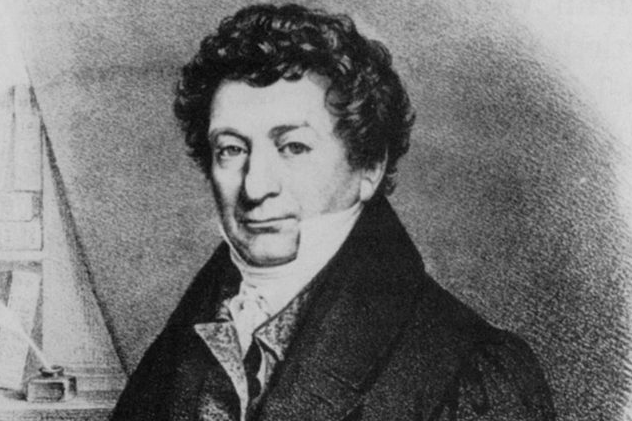
By 1815, morphine was the go-to remedy for pain and for those who were trying to get off opium and laudanum. It was discovered in 1805 by a German scientist named Friedrich Serturner, and he went to some terrifying lengths to prove that his findings were the real thing.
He’d started his research about two years earlier, and it was all based on his observations that some samples had a clear pain-numbing effect, while other samples didn’t. He figured that opium must contain something that could counteract pain, but it wouldn’t work unless the dose was high enough. Using ammonia to separate opium into its base components, he isolated what he called morphine.
No scientific find is given any kind of attention whatsoever without some solid proof, so he started down the horrific path of dosing mice that lived in his basement and then dogs that wandered around his neighborhood. The mice and the dogs died, but Serturner wasn’t dissuaded. Still convinced that he was on to something, he decided that he needed to test his drug on living creatures that could tell him exactly what was going on and what they were feeling. He did what any enterprising 20-year-old would do: He recruited three teenage friends and handed out his morphine and alcohol mix.
By the end of the experiment, he and his friends each consumed around 10 times what’s now recommended for a single dose of morphine. They started to experience nausea, fever, and dizziness. Serturner, who was taking the same stuff, thought they were poisoned. He handed out 8 ounces of vinegar to enduce violent vomiting, followed by carbonate of magnesia and a long sleep. The aftereffects of the morphine, headaches, stomachaches, and extreme fatigue, lasted for a few days after their experiment, but it gave Serturner the data that he needed. By 1831, he had received a massive cash prize from the Institute of France for his work in medicine, but there’s no record on whether or not he shared the 2,000 francs with his friends.


